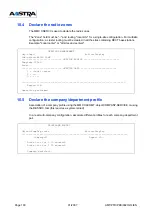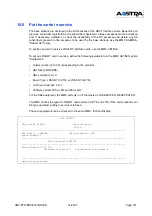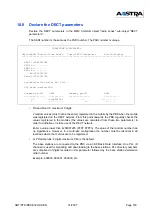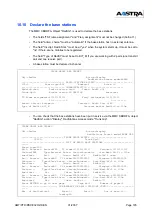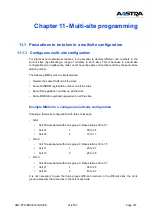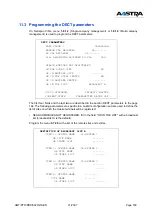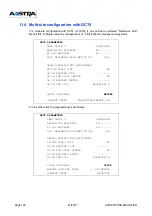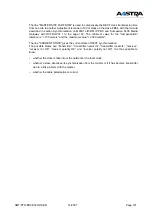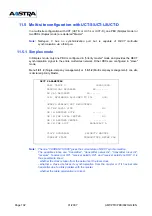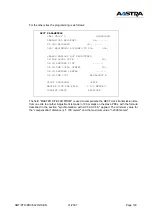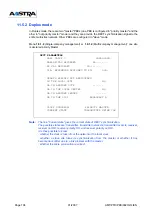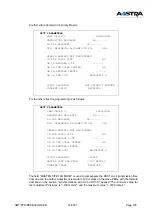
Page 194
01/2007
AMT/PTD/PBX/0020/2/4/EN
11.5.2 Duplex mode
In Duplex mode, there are two "master" PBXs (one PBX is configured in "priority master" and the
other in "not priority master" mode) and they can provide the DECT synchronisation signal to the
entire multi-sites network. Other PBXs are configured in "slave" mode.
Menu
1.8.1.2
(Single-company management) or
1.9.1.2
(Multi-company management): one site
is declared priority Master
Note:
The line "Current state" gives the current state of DECT synchronization.
The possible states are: transmitter, transmitter netwk clk, transmitter local clk, receiver,
receiver not OK, receiver polarity OK, and receiver polarity not OK.
It is thus possible to know:
- whether the clock is taken from the network or the local clock,
- whether a slave site takes its synchronization from the master or whether it has
become transmitter due to a link problem with the master,
- whether the cable polarisation is correct.
DECT PARAMETERS
PARI VALUE 0 999999999.
RANDOM VAL RECORDED 86........
RS VAL RECORDED 66........
DIR. BEGINNING ASSIGNED TO PLL 999.
SEARCH MOBILES NOT REGISTERED
IN THE LOCAL SITE NO
OR IN ANOTHER SITE ........
OR IN THE LOCAL CENTER NO
OR IN ANOTHER CENTER ........
OR IN THE LIST BROADCAST A
CLOCK SYNCHRON. PRIORITY MASTER
CURRENT STATE TRANSMITTER NETWK CLK
Summary of Contents for NeXspan C
Page 2: ...Page 2 01 2007 AMT PTD PBX 0020 2 4 EN...
Page 20: ...Page 20 01 2007 AMT PTD PBX 0020 2 4 EN...
Page 66: ...Page 66 01 2007 AMT PTD PBX 0020 2 4 EN...
Page 70: ...Page 70 01 2007 AMT PTD PBX 0020 2 4 EN Figure 4 2 Bottom view of the LD4 ST card...
Page 134: ...Page 134 01 2007 AMT PTD PBX 0020 2 4 EN...

